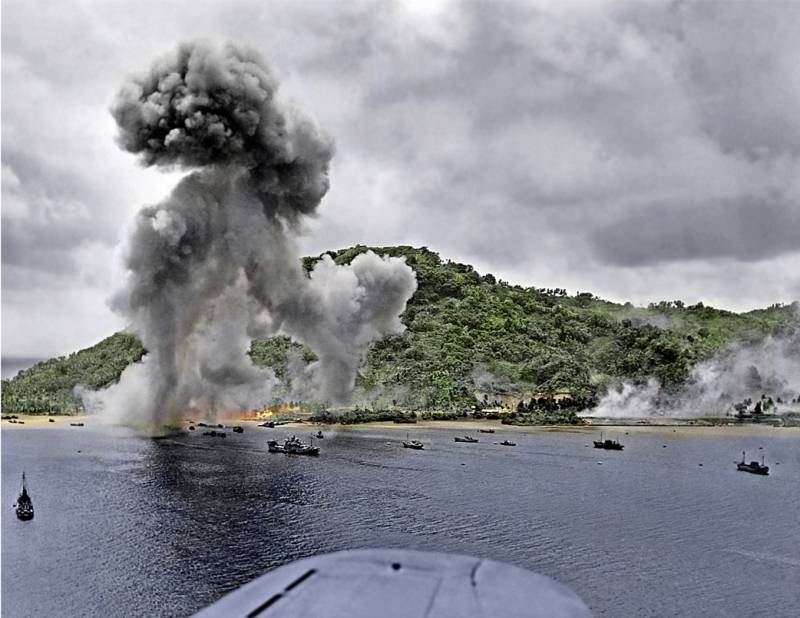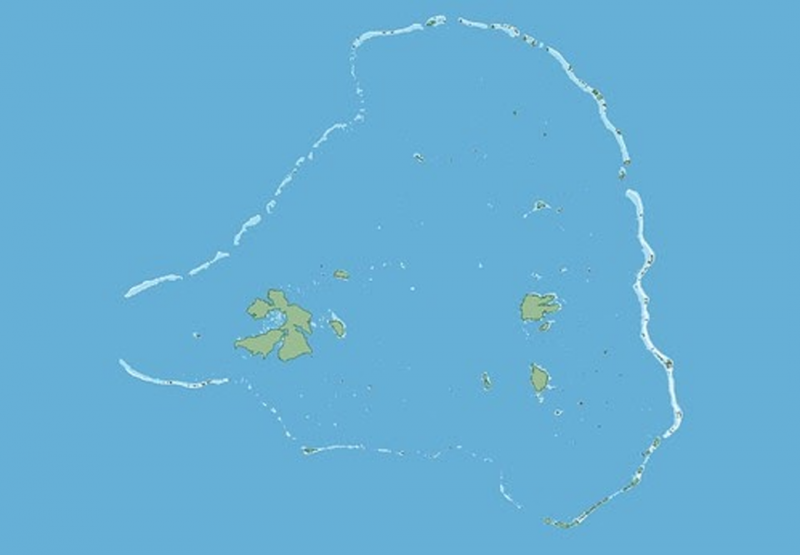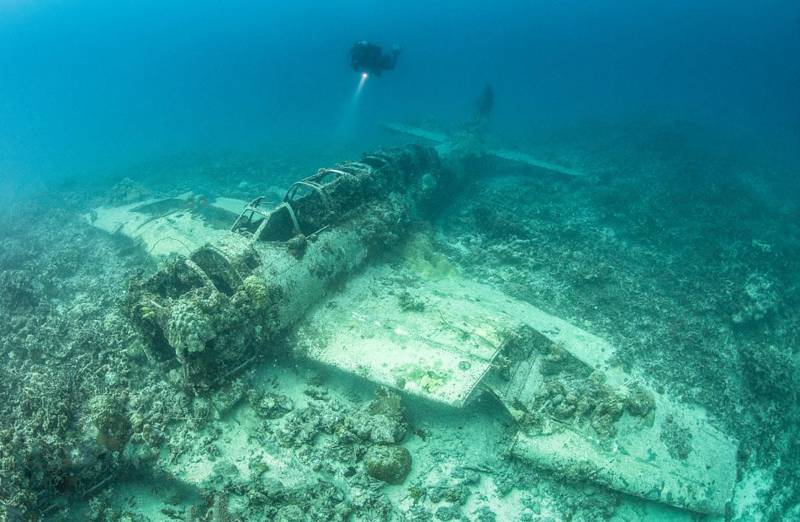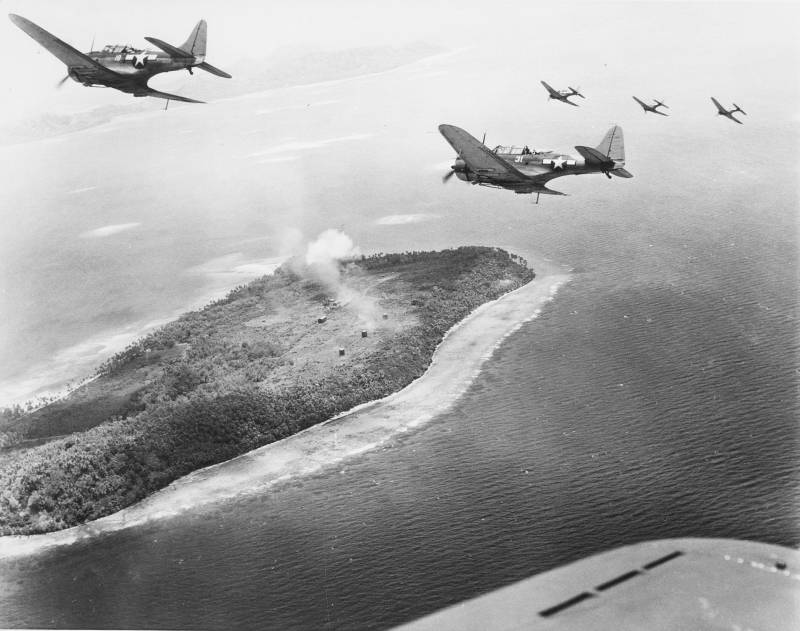Truk Atoll. A tropical paradise that has seen special military operations
During the Second World War, Truk Atoll, being the largest base of the Imperial fleet in the Pacific Ocean, was an important strategic facility. As you know, despite all the efforts of the Japanese, the United States eventually seized the initiative in the Pacific theater. After capturing the Gilbert Archipelago in November 1943, they began preparations for the campaign in the Marshall Islands. The military leadership understood that Truk Atoll could have allowed the Japanese to counter-strike. To exclude this possibility, the Americans developed the military operation "Hailstone".
A fast aircraft carrier task force 58 was created, which included: heavy aircraft carriers Bunker Hill, Enterprise, Essex, Intrepid, Yorktown, light aircraft carriers Belleau Wood, Cabot, Monterey, Cowpens, battleships Alabama, Iowa, Massachusetts, New Jersey, North Carolina, South Dakota, 5 heavy and 5 light cruisers, as well as 28 destroyers and 10 submarines in positions around Truk.
The Imperial Navy concentrated a large force at Truk Harbor in early January 1944. At five airfields, about 200 pilots were ready for takeoff. Intensive aerial reconnaissance of the Americans made it clear to the Japanese command that an attack was being prepared on the atoll.
And the command drew conclusions: in the first half of February, all large ships left for other bases. Only 2 light cruisers, 8 destroyers and more than 50 auxiliary transport ships remained in the harbor.
Events February 17
Seventy-two Hellcat fighters took off from the carriers of Formation 58 in the early morning. They had to conquer dominance in the sky. And although the Japanese did not manage to notice the threat in time, their planes also took to the air, and a battle ensued. American pilots reported on the destruction of about 80 enemy aircraft, about half of which were destroyed on the ground. Moreover, for the United States, losses were minimal - only 4 vehicles.
Then American bombers and torpedo bombers took to the skies and attacked airfields, a seaplane base and ships.
Even before the attack began, the atoll was abandoned by a small detachment of Japanese ships, consisting of the light cruiser Katori, the destroyers Maikaze and Nowaki, the auxiliary cruiser Akagi Maru and the minesweeper Shonan Maru. However, he did not have time to go far.
First, the ships were attacked by the American aviationthat sank Akagi Maru. The aircraft also managed to damage the Katori. Then the detachment was overtaken by American ships: the battleships Iowa and New Jersey, a couple of heavy cruisers and several destroyers. As a result, only Nowaki was able to develop full speed and escape the pursuit.
Also, the transport Asaka Maru and the destroyer Yamagumo managed to escape from the atoll, and they reached the coast of Japan.
Night from 17 to 18 February
American aircraft wanted to destroy all airfields available for attack, but could not do this. Thus, the Japanese were able to retaliate. The radars of American ships were unable to detect a group of torpedo bombers in time, which flew into the raid. One torpedo hit the aircraft carrier Intrepid, as a result of which it was forced to interrupt participation in the operation, and 11 people on board were killed. The battleship Iowa also received a hit, however, due to the absence of serious damage, it was able to continue the campaign.
In turn, the Americans sent 12 TBF-1C Avenger torpedo bombers, the name of which is symbolically translated as "avengers". They took off from the aircraft carrier Enterprise.
This group carried out the first night bombardment in the history of American aircraft carrier aviation using target designation radar. As recorded, 13 of the 48 bombs hit the target. The attack resulted in the sinking of 2 Japanese tankers and 6 transport ships. One plane did not return to the aircraft carrier.
Events in the afternoon of February 18
The next day, American aircraft continued their attacks. The air was behind them, the Japanese anti-aircraft fire was weak. Not a single Japanese fighter flew to intercept. On this day, Truk was attacked by three waves of American planes. To prevent the smoke rising from the burning oil storage facility from impairing visibility, it was deliberately attacked at last. After completing the operation, the compound headed for the Mariana Islands.
Results
The Japanese lost 2 light cruisers, 4 destroyers, almost 40 transport and auxiliary ships. Almost all Japanese aviation on Truk - more than 280 aircraft - was destroyed. The casualties among the personnel were in the thousands. From the side of the Americans: 25 aircraft did not return, 29 pilots and 11 sailors were killed.
The attack on Truk disabled the Japanese naval base, and the Allied aircraft continued to attack the atoll without Japanese opposition. In the course of Operation Hailstone, the Americans developed new tactics and gained invaluable experience for conducting further aviation operations.
Learn more about the three participants in this operation - the battleships Massachusetts, New Jersey and North Carolina - in the documentaries from the series "Sea Legends"




Information